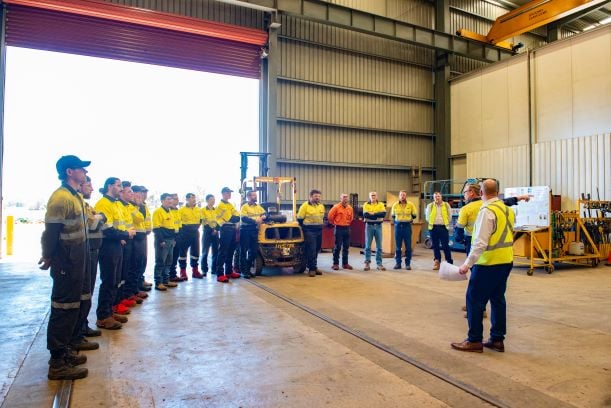
We have six new guiding principles that define how we need to behave as a business every day to become the business we want to be.
For Schlam, these principles are lines in the sand that will not be crossed. They determine our behaviours and are qualities that we search for when hiring new people to join the Schlam team.
Our most important principle is Everyone Goes Home. We look out for each other and keep each other out of harm's way – nothing is more important.
PROTECTING OUR PEOPLE
Every workplace has occupational risks attached to it, but some more so than others. The mining environment, in particular, poses much higher risks to its workers than an office environment, for example. The good news is that the industry as a whole is getting safer.
In the 12 years to 2015, the fatality rate in the mining industry decreased by 65% from 12.4 worker fatalities per 100,000 workers in 2003, to 4.4 in 2015.
Here at Schlam, we believe that:
IDENTIFYING RISKS
Understanding and being aware of your environment is the first step to preventing illness or injury in the workplace, reveals mining medicine researcher Megan Clark. Some of the most common risks are:
Noise: Mines are noisy places to work. There is constant drilling and heavy machinery roaming around, so naturally, your ears are potentially going to suffer. It can be easy for you to get used to loud noises mentally, but that doesn’t mean that damage isn’t still being done. Many people don’t notice the damage to their hearing until long after they were first exposed to the noisy environment, as most damage occurs very slowly.
UV Exposure: By now, most people have had the dangers of UV exposure drilled into them. Overexposure can put you at risk of skin cancer, of which Australia has the highest rate in the world. Not only can UV rays cause melanomas to form, but they can cause severe damage to your eyes if you are not wearing protective eyewear.
Musculoskeletal disorders: Musculoskeletal disorders refer to any problems affecting your bones, muscles, blood vessels and nerves. Mineworkers are exposed to a variety of potential health risks that fall under this broad category. While musculoskeletal damage can occur due to a trip, fall or heavy lift, the more serious ones occur slowly over time. This could be due to ongoing heavy lifting or repetitive strains.
Thermal stress: A common health risk that miners face is thermal – or heat – stress. Mining environments are often very hot and humid, particularly in outback Australia, which can cause thermal stress in workers over time. Overexposure to heat and humidity can cause the body to become fatigued and distressed. This can result in heat stroke or more serious ongoing health problems.
RISK PREVENTION AND MANAGEMENT
Measures to avoid, prevent and reduce risks are a part of our culture at all levels.
The methods of risk control and reduction is commonly referred to as the Hierarchy of Control. Often more than one method of control will be necessary to meet the risk criteria.
MENTAL HEALTH
Mental health problems can harm mining workers and their families. Mental health can also have an adverse effect on industry productivity due to higher levels of absenteeism.
It is estimated that between 15 per cent and 30 per cent of employees will experience mental health issues in their careers.
According to the World Health Organisation, good mental health is not merely an absence of a mental disorder. It is a state of wellbeing where an individual:
Schlam has put a focus on supporting the mental health and wellbeing of employees.
Initially, this focus was on culture, aimed at reducing the stigma associated with mental illness, raising awareness of mental health conditions, and building capacity and confidence to recognise and support people experiencing mental health issues.
More recently, we’ve equipped our leaders with the knowledge and skills to recognise when someone may be experiencing a mental health issue through a mental health first aid program. These skills are aimed at giving leaders in all areas of the business the confidence to initiate a conversation and advise on support, such as our Employee Assistance Program.
NOT JUST ABOUT HEALTH AND SAFETY
While the Everyone Goes Home principle is primarily health and safety-related, it supports Schlam employees to create a healthy work/life balance.
According to professional services provider Deloitte, companies that promote work-life balance record two times more productivity than those that do not.
We believe that Schlam employees can have more fulfilling lives and work experiences when they have flexible working arrangements. Flexibility helps to improve employee productivity by adjusting their work and balancing it with their physical, mental, and emotional health and demands.
Visit our ideology page for more information on Schlam’s principles.
